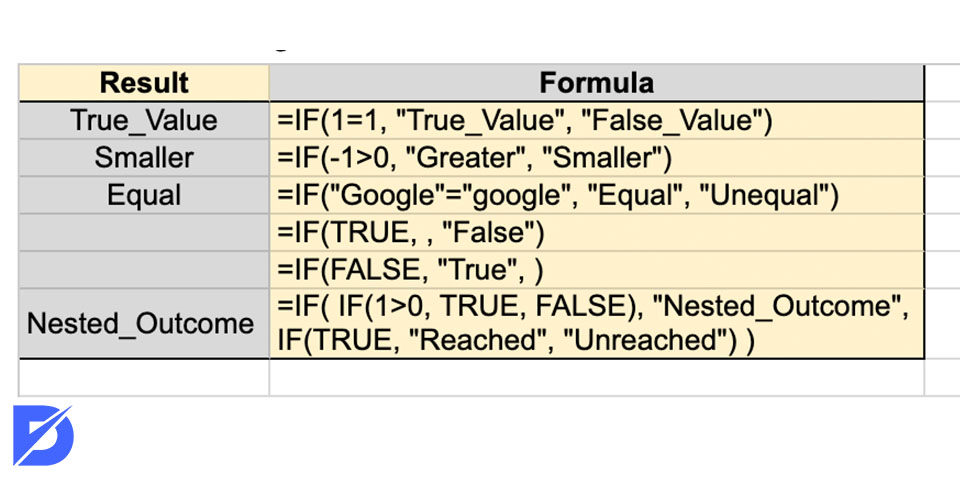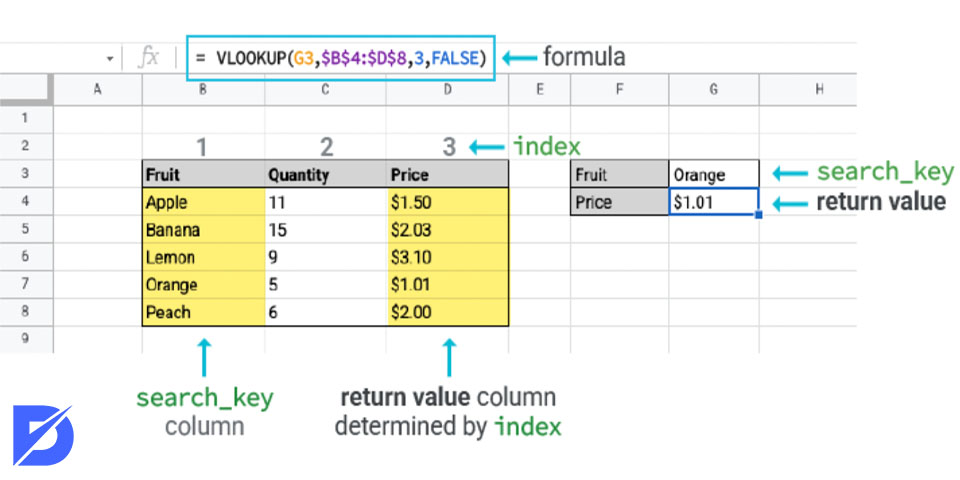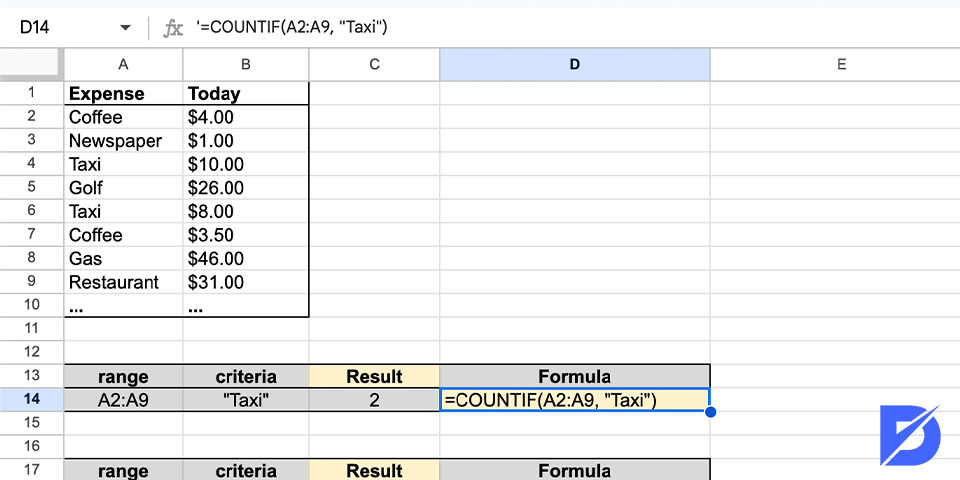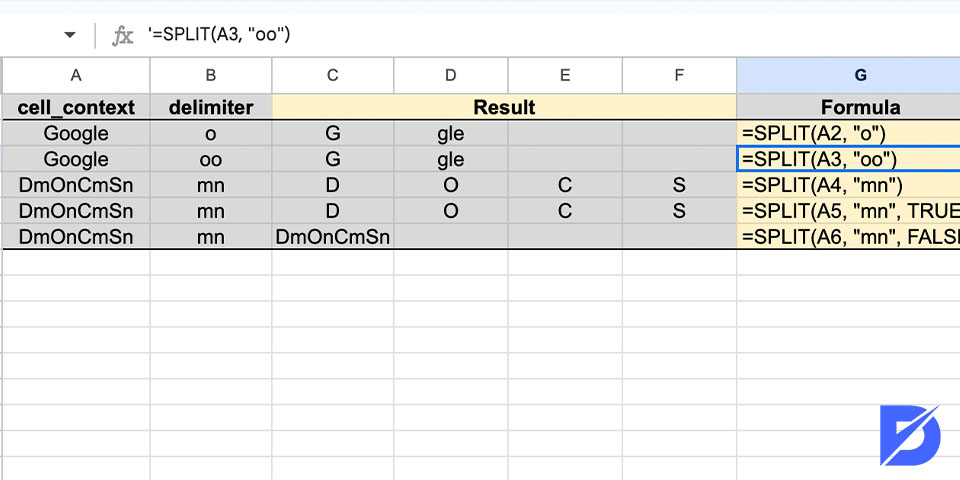Google Sheets is a cloud-based spreadsheet application that makes it possible to easily create, edit and share spreadsheets. With its intuitive interface and extensive library of Google Sheets commands, you can effortlessly navigate your spreadsheets and unlock valuable insights.
In the ever-evolving field of SEO, it is necessary to stay organized and make informed decisions based on data. This is where Google Sheets, a powerful cloud-based spreadsheet software, comes in. By leveraging the capabilities of core Google Sheets functionality, you can streamline your workflows, track keyword rankings, and upgrade your optimization strategies. In this blog post, we will examine the basic Google Sheets commands every SEO should know, focusing on the ranking function, and reveal how these functions can improve your SEO success.
Google Sheets Functions Every SEO Specialist Must be Aware of
Your job is now easier with Google Sheets, which offers many powerful functions to improve your SEO workflow! Understanding basic Google Sheets commands and functions in digital marketing can help you track and analyze data efficiently.
When it comes to SEO, arming yourself with the right tools and knowledge is essential. By learning basic Google Sheets commands and mastering the ranking function, you can gain valuable insights into keyword rankings and optimize your website’s visibility. Furthermore, leveraging an SEO spreadsheet powered by Google Sheets lets you streamline your workflows and make data-backed decisions that drive successful SEO campaigns. Here’s a list of SEO tools for Google Sheets you can benefit from:
- IF
- VLOOKUP
- LEN
- IMPORTXML
- IMPORT DATA
- COUNTIF
- SPARKLINE
- SPLIT
- UNIQUE
- CONCATENATE
Let’s dive in and discover how to leverage the rank function of Google Sheets and other valuable commands. Thus, you can enhance your ability to rank effectively and make data-driven decisions.
IF
Used for: The IF function in Google Sheets allows you to perform conditional evaluations and return values based on specified criteria. It helps you make decisions or perform calculations based on logical conditions.
Function: =IF(logical_expression, value_if_true, value_if_false)

The “IF” function in Google Sheets commands is a versatile and powerful tool that allows you to create conditional statements to automate data analysis and decision-making. With the “IF” function, you can define specific conditions and instruct the spreadsheet to perform different actions based on whether those conditions are met. This function is a game-changer for SEO professionals aiming to rank in Google Sheets by effectively managing and manipulating data.
Regarding rank in Google Sheets, the “IF” function becomes indispensable. By using the “IF” function in conjunction with the rank function Google Sheets, you can easily determine the position of a value or a keyword within a given dataset. For example, you can create a formula that checks if a keyword ranks within the top 10 positions and displays a specific message or performs a particular action accordingly. This combination of Google Sheets commands allows you to easily automate the tracking and analysis of keyword rankings.
VLOOKUP
Used for: It is part of the extensive repertoire of sheet functions and is commonly employed in data analysis tasks. VLOOKUP, which stands for “Vertical Lookup,” allows users to find a specified value in the leftmost column of a range and retrieve a corresponding value from a specified column in the same row.
Function: =VLOOKUP(search_key, range, index, is_sorted)

When it comes to SEO spreadsheet analysis, the VLOOKUP function is invaluable. For example, you can utilize VLOOKUP to integrate rank-tracking data into your SEO spreadsheets. You can extract relevant information from your rank-tracking tool or database by combining the VLOOKUP function with the appropriate parameters, such as the keyword or URL. This lets you easily access the ranking position, organic traffic, or other metrics associated with specific keywords or URLs. By leveraging the power of VLOOKUP and other Google Sheets functions, SEO professionals can efficiently manage and analyze data, track keyword rankings, and derive insights for informed decision-making.
In summary, VLOOKUP is a vital component among the various sheet functions, providing the means to perform efficient data retrieval and analysis. Its use extends to tracking rank in Google Sheets, SEO spreadsheet analysis, and numerous applications that make searching and retrieving specific information from large data sets possible.
LEN
Used for: The LEN function in Google Sheets is useful for determining the length of a specified text string or cell content. It calculates the total number of characters within a cell, including spaces, numbers, symbols, and letters.
Function: =LEN(insertcell)
The LEN function is one of the versatile Google Sheets commands allowing users to determine the length of a text string or cell content. It calculates a cell’s total number of characters, including spaces, symbols, numbers, and letters. The LEN function is commonly used in various scenarios, such as text analysis, data cleansing, and character limit validations.
When working with rank in Google Sheets or utilizing the rank function, the LEN function is crucial. In tasks like SEO analysis and data manipulation, the length of certain text elements, such as titles or meta descriptions, can impact the Google Sheets rank and search engine rankings. By incorporating the LEN function within the Google Sheets ranking formula, users can easily assess the character length of these elements and optimize them for better SEO performance. By leveraging the power of Google Sheets commands like LEN, users can efficiently analyze and manipulate data, making informed decisions based on the results.
IMPORTXML
Used for: The IMPORTXML extracts data from XML files or web pages and imports them directly into a Google Spreadsheet.
Function: =IMPORTXML(url, xpath_query)
The IMPORTXML function is a powerful tool among the Google Sheets commands that allows users to extract data from XML files or web pages and import it into their Google Sheets. This function enables users to retrieve specific information from websites or XML data sources, making it a valuable resource for data gathering and analysis. By utilizing XPath queries, users can specify the desired data elements or attributes to import, providing flexibility in accessing and manipulating data.
In rank tracking and SEO analysis within Google Sheets, the IMPORTXML function can play a vital role. Users can extract relevant data from websites or XML-based data sources, such as search engine rankings or other SEO metrics. Users can automatically import and update ranking data by integrating the IMPORTXML function into their Google Sheets ranking formula, allowing for dynamic analysis and reporting. This function enhances the efficiency of SEO analysis tasks, enabling users to gather and process valuable data directly within their Google Sheets, alongside other sheet functions and data manipulation capabilities.
IMPORT DATA
Used for: That allows users to import data from an external source, typically a CSV or TSV file, and pull it directly into a Google Sheet. This function facilitates the retrieval of data from a specified URL and automatically populates the sheet with the data from that file.
Function: =IMPORTDATA(url)
The IMPORT DATA function in Google Sheets is a powerful tool among the collection of Google Sheets commands. It allows users to import data from an external source directly into a Google Sheet, typically in CSV or TSV file format. By providing the file’s URL as an argument, the function automatically retrieves and populates the sheet with the data from that file. This feature is particularly beneficial when there is a need to regularly update data from an external source within a Google Sheet, ensuring that the sheet remains up-to-date and synchronized with the data source.
This function is extremely useful for using the rank tracking and rank function of Google Sheets. Users can directly import ranking data or SEO metrics from external sources into their Google Sheets by specifying the appropriate URL. Users can effortlessly retrieve and update ranking data by incorporating the IMPORT DATA function within their Google Sheets ranking formula, facilitating dynamic analysis and reporting. This integration of Google Sheets commands allows for efficient data manipulation and enables users to incorporate the imported data into their SEO spreadsheet analysis workflows.
The IMPORT DATA function simplifies the process of importing data from external sources, keeping SEO Spreadsheets up-to-date and synchronized. When combined with the ranking function and used for Google Sheets ranking formulas, the IMPORT DATA function becomes an essential component of SEO analysis, allowing users to seamlessly import ranking data for further analysis and decision-making within Google Sheets environments.
COUNTIF
Used for: The COUNTIF function counts the number of cells in a range that fulfill a predefined criterion or condition. This function is particularly useful when analyzing data and quantifying the occurrences of a certain value or evaluating the frequency of specific conditions.
Function: =COUNTIF(range, criteria)

The COUNTIF function is a tool among the Google Sheets commands that allows users to count the number of cells within a range that meet a specific criterion or condition. It provides a simple yet effective way to analyze data and quantify occurrences based on specific criteria. By utilizing logical operators such as greater than (>), less than (<), or equal to (=), users can define conditions to be evaluated within the COUNTIF function.
The function enables users to count the occurrences of specific ranking positions or other metrics within a dataset. By incorporating the COUNTIF function into their Google Sheets ranking formula, users can accurately track the frequency of desired ranking positions and gain insights into the data distribution. This integration of Google Sheets commands empowers users to efficiently analyze and report on ranking data, facilitating data-driven decision-making in SEO spreadsheet analysis.
In conclusion, the COUNTIF function in Google Sheets is a versatile tool for quantitative analysis, providing the ability to count occurrences based on specified criteria. It finds particular value in rank tracking within Google Sheets and the utilization of the rank function. By incorporating the COUNTIF function within rank Google Sheets, users can effectively track and evaluate the frequency of specific ranking positions or other relevant metrics, enabling them to make informed decisions based on the analyzed data.
SPARKLINE
Used for: It enables small data visualizations known as mini-charts. These mini-charts can be created directly within Google Sheets, making it easy to visualize data and identify important information.
Function: =SPARKLINE(insertcell range)
The “SPARKLINE” function in Google Sheets is one of the powerful Google Sheets commands that allows users to create miniature charts within individual cells. These compact visual representations provide a quick and concise way to analyze trends and patterns in data. By simply selecting a range of data, you can generate sparklines that showcase variations such as line graphs, bar charts, or column charts. The “SPARKLINE” function is ideal for users who want to present data visually appealingly without occupying too much space in their spreadsheet.
When data in Google Sheets need to be ranked, the “rank function Google Sheets” comes to the rescue. Using the “rank” function, you can easily determine the position or rank of a value within a range of data. This function calculates the rank based on the specified order, whether ascending or descending. For instance, if you have a list of students’ grades and you want to know their rank, you can employ the “rank function Google Sheets” to assign a position to each grade and determine their relative standing. With this function, you can quickly identify the highest or lowest values in a dataset, making it convenient for analyzing and comparing data sets.
SPLIT
Used for: Used to divide the text into separate cells or columns according to a specific delimiter.
Function: =SPLIT(insertcell, delimiter)

The “SPLIT” function in Google Sheets commands is used for dividing the text into separate cells or columns based on a specified delimiter. This powerful function is particularly helpful when a cell contains multiple values or a string of text with a consistent pattern. By specifying the delimiter, such as a comma or space, the “SPLIT” function can automatically separate the text into distinct elements, each placed in its cell. This functionality is useful for data cleaning, organizing, and extracting specific information from a larger string of text.
One common use of the “SPLIT” function is when working with imported or copied data that needs to be parsed and separated into individual cells. For example, if you have a column of names in a single cell, separated by commas, you can use the “SPLIT” function to split each name into separate cells, making it easier to sort, filter, or analyze the data. Additionally, the “SPLIT” function can be applied to separate values in a cell that are separated by spaces, tabs, or any other character you specify, allowing for better data management and manipulation.
Furthermore, the “SPLIT” function can be combined with other Google Sheets commands and functions to extract specific parts of a text or perform further calculations. By using the “SPLIT” function in conjunction with functions like “INDEX” or “VLOOKUP,” you can retrieve specific values from the split text or match them with corresponding data in other cells.
UNIQUE
Used for: The “UNIQUE” function allows users to extract unique values from a data range or column.
Function: =UNIQUE(array, [by_col], [exactly_once])
The “UNIQUE” function in Google Sheets is a tool among the Google Sheets commands that allow users to extract unique values from a range or column of data. By applying the “UNIQUE” function, you can automatically create a new list that contains only the distinct values from the original data set. This function is particularly useful when dealing with large datasets or when you need to remove duplicate values to focus on unique entries.
Combining the “UNIQUE” function with the “google sheets rank” functionality allows you to easily obtain the rankings of unique values within a dataset. This allows you to determine the relative positions of distinct values based on their magnitude or order. Whether you need to rank products based on sales figures or students based on their scores, the combination of “UNIQUE” and “rank google sheets” functions enables you to obtain valuable insights from your data.
You acquire a strong data exploration and modification tool by introducing the “UNIQUE” function into your spreadsheet study. In addition to extracting unique values, you can use the “UNIQUE” function to generate new lists or subsets of data based on specific criteria. This function lets you filter out redundant information and focus on the distinct elements within your dataset, which can be further analyzed or utilized in various calculations. Whether you’re working with lists, databases, or other forms of data, the “UNIQUE” function expands the capabilities of Google Sheets, providing valuable functionality for data processing and organization.
CONCATENATE
Used for: It lets users combine text strings from different cells into a single cell.
Function: =CONCATENATE(text1, text2, [text3], …)
The “CONCATENATE” function is a versatile tool among the Google Sheets commands that allows users to combine text strings from multiple cells into a single cell. By utilizing the “CONCATENATE” function, you can merge text values, numbers, or other data types from various cells or ranges, creating a cohesive and consolidated output. This function is particularly useful when you need to concatenate data for various purposes, such as creating full names, generating unique identifiers, or constructing sentences based on multiple inputs.
The possibilities are endless when it comes to utilizing the “CONCATENATE” function for SEO purposes. Incorporating the “CONCATENATE” function within an SEO spreadsheet allows you to create dynamic formulas that generate optimized meta tags, URLs, or title tags. For example, you can concatenate relevant keywords, location information, and other variables to construct SEO-friendly URLs or page titles that can positively impact your website’s search engine rankings. By leveraging the flexibility of the “CONCATENATE” function within your SEO spreadsheet, you can streamline the process of generating optimized content and improve your website’s visibility in search results.
The combination of the “CONCATENATE” function and other sheet functions further enhances its utility. For instance, by using the “CONCATENATE” function and the “google sheets rank” function, you can create concatenated strings incorporating rankings or position numbers. This can be beneficial for generating reports, creating dynamic labels, or constructing formulas incorporating concatenated text and numerical data. The “CONCATENATE” function, in conjunction with other sheets functions, allows for flexible data manipulation and customization, empowering users to efficiently handle and process their data within Google Sheets.
Unlock the Power of SEO with Essential Google Sheets Functions
You’re an SEO professional looking to up your data analysis game, and now you’ve learned about the many Google Sheets functions available. So, you can now explore the potential of Google Sheets commands to help you conquer search engine rankings. From mastering the art of ranking in Google Sheets to taking advantage of the dynamic “google sheets rank” functionality, use these essential tools to optimize your website’s performance now. And then leverage your SEO efforts to unlock the true potential of your data.
For SEO techniques, understanding how to rank in Google Sheets can make your job easier. The rank function Google Sheets allows you to assign positions or rankings to your data, allowing you to identify the best-performing keywords, analyze competitor rankings or track the progress of your website. By harnessing the power of “rank sheets functions,” you can gain invaluable insight into the competitive landscape and fine-tune your SEO strategies to achieve the best results.
However, this is only the tip of the iceberg. Google Sheets offers numerous functions to take your SEO efforts to new heights. Imagine being able to seamlessly combine and manipulate data with the “CONCATENATE” function, create visually appealing graphs with the “SPARKLINE” function, or extract unique values with the “UNIQUE” function. These Google Sheets commands provide versatile tools to optimize your keyword research, monitor backlink profiles, analyze website traffic, and much more. Sheets functions automate and streamline your processes, allowing you to focus on what’s important – building an effective SEO strategy.
Conclusion
Ready to embark on your SEO adventure armed with sheet functions? It’s time to harness the power of data and conquer the search engine rankings. Whether you are an experienced SEO expert or a novice, these essential tools will help you make data-driven decisions, strengthen your analyses and gain a competitive advantage.
Frequently Asked Questions About
Google Sheets functions offer a wide range of benefits for SEO professionals. They enable efficient data analysis, automation, and visualization, allowing SEO experts to gain valuable insights, track rankings, manipulate data, and make informed decisions.
The “google sheets rank” function is a powerful tool for SEO professionals. It assigns positions or rankings to data, enabling the identification of top-performing keywords and competitor rankings and tracking website progress.
The “CONCATENATE” function in Google Sheets allows combining multiple text strings into a single cell. This function is invaluable for SEO tasks, such as creating meta tags, URLs, or dynamic content. SEO professionals can concatenate keywords, location information, or other variables to optimize titles, URLs, and meta tags, enhancing search engine visibility and improving website rankings.
The “SPARKLINE” function is highly beneficial for SEO professionals as it enables the creation of compact and visually appealing charts within cells. SEO professionals can utilize the “SPARKLINE” function to present data effectively, visualize keyword rankings, track progress, and communicate insights to stakeholders.
The “UNIQUE” function in Google Sheets is valuable for SEO tasks that involve data cleansing, deduplication, and identifying distinct values. SEO professionals can extract unique keywords, URLs, or backlink profiles, enabling focused analysis and targeted optimization.





No comments to show.